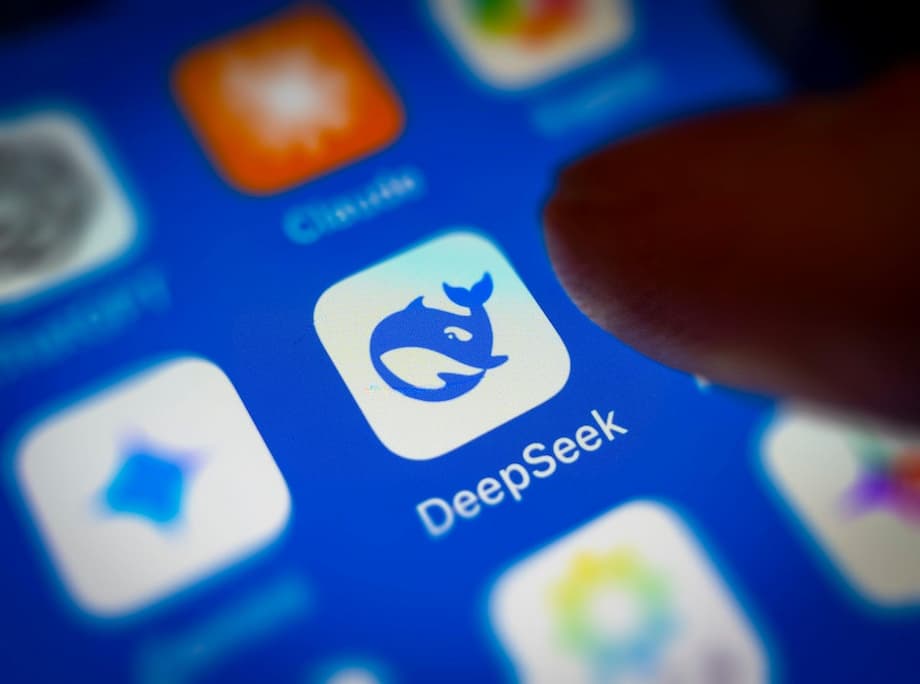Why a $294,000 price tag shocked the AI world
When DeepSeek published a peer reviewed paper on its reasoning model R1 in Nature, one figure caught the world’s attention: 294,000 dollars. Headlines suggested the flagship model had been trained for a fraction of what US rivals reportedly spent. The number was real, but it applied to a narrow slice of the work. That amount covered a final reinforcement learning stage that sharpened the model’s step by step reasoning. It did not include the months of pretraining on a much larger base model that R1 depends on.
- Why a $294,000 price tag shocked the AI world
- What the Nature paper actually says
- The real bill to build R1 starts with V3 pretraining
- Reinforcement learning is a finishing step, not the whole job
- Chips, export rules, and what DeepSeek actually used
- Was DeepSeek far cheaper than Western rivals
- Data, distillation, and what the training set likely contained
- Why the $294,000 headline spread and why it matters
- What this means for AI costs and competition
- Key Points
R1’s performance rests on DeepSeek V3, a large language model trained on a massive corpus using a large compute cluster. Only after that expensive foundation was in place did the team run reinforcement learning to nudge the model toward better logic and problem solving. Confusing the finishing step with the entire project is what turned a specialized cost line into a headline.
The difference matters. A model that rivals the best systems in coding and math does not emerge from a weekend on a few racks of chips. It takes sustained compute, extensive data curation, repeated experiments, careful safety and evaluation work, and a final optimization phase. The Nature paper opened a valuable window into that last phase. It did not erase the heavy lift that came before it.
What the Nature paper actually says
The R1 supplementary material details a reinforcement learning run on 512 Nvidia H800 GPUs. It describes an initial R1 Zero training period of about 198 hours and a further 80 hours to reach the released R1. The team also logged roughly 5,000 GPU hours to generate preference data used in the process. Priced at typical rental rates for H800 class accelerators, those steps together come in just under 300,000 dollars. That figure does not represent the entire time and compute needed to build a state of the art model from scratch.
The paper also clarifies hardware context. DeepSeek primarily trained R1 on H800s, chips that Nvidia designed for China after US export rules restricted access to higher end accelerators. The team acknowledged using A100 GPUs for preparatory work with a smaller model, then moved to H800s for the main R1 reinforcement learning run. Readers can review the technical specifics and cost lines in the peer reviewed materials posted by the journal Nature.
The real bill to build R1 starts with V3 pretraining
DeepSeek’s own materials point to the largest cost center: pretraining the V3 base model that R1 builds on. V3 was trained on 2,048 H800 GPUs for about two months. That timeline translates to roughly 2.79 million GPU hours. Using a conservative rental assumption of about 2 dollars per GPU hour for this class of hardware, the pretraining run alone lands near 5.58 million dollars. Add the roughly 294,000 dollars for reinforcement learning and associated data generation, and the compute bill to reach R1’s released form approaches 5.87 million dollars.
This estimate tracks the paper’s framing that R1’s 294,000 dollars is an extra cost on top of the base model. It also aligns with outside analyses that place R1’s total compute scale in the same range as other large open models. That still looks lean compared with rumored budgets for the largest closed systems, yet it is far from the bargain implied by a single sub 300,000 dollar headline.
How GPU hour math works
GPU hours are a simple way to measure compute: one GPU running for one hour equals one GPU hour. A training run’s total is the product of the number of GPUs and the hours logged. Price comes from what those hours cost in the market, either as cloud rental or as the depreciation and operation of owned hardware. A developer renting 2,000 plus accelerators for months pays by the hour. A developer buying the same cluster lays out capital upfront, then pays for power, cooling, space, and maintenance.
Buying a cluster at this scale would cost far more than renting for a single run. Outfitting 2,048 H800 class GPUs, networking, and servers would run well above 51 million dollars at current market prices, and that excludes engineering time, data licensing, evaluation labor, storage, and the many failed experiments that precede a successful release. The 5.87 million dollar figure is best seen as the cost of the big successful runs, not the full cost of doing the research that made them possible.
Reinforcement learning is a finishing step, not the whole job
Reinforcement learning changes how a trained model behaves by rewarding desired outcomes. In the R1 program, DeepSeek used a technique that scored answers and nudged the model toward solutions that landed on correct results. Researchers describe this approach as pure reinforcement learning. It does not require human written chains of thought. The model explores and tests its own paths, receives a signal for correctness, and gradually improves its internal strategy for reasoning.
That finishing step is valuable. It can unlock stronger performance in math, coding, and scientific tasks, where the goal is to reach a verifiable result. It is also much cheaper than pretraining. The heavy lift is still the months of learning that gave the base model language knowledge and broad capabilities. Reinforcement learning then shapes those capabilities for specific goals like stepwise reasoning and tool use.
Chips, export rules, and what DeepSeek actually used
DeepSeek trained under a chip supply constraint. The United States restricted exports of high end accelerators to China, which is why the H800, a reduced export friendly version of Nvidia’s data center GPU, appears across DeepSeek’s materials. Industry chatter has suggested researchers in China found ways to access faster parts, and company statements have been parsed line by line for clues about hardware sources. What matters for the cost story is clearer: the R1 reinforcement learning stage used a 512 H800 cluster, while earlier prep work included time on A100s.
In its supplementary document, the team acknowledged that fact. The researchers explained the role of A100s in the setup phase before the main R1 runs on H800s.
DeepSeek researchers wrote: “Regarding our research on DeepSeek-R1, we utilized the A100 GPUs to prepare for the experiments with a smaller model.”
That detail helps reconcile how the final budget and the chip mix can both be true. H800s figure in the main reinforcement learning cost accounting, while A100s appear in earlier experiments that shaped the approach.
Was DeepSeek far cheaper than Western rivals
The complete compute bill that produced R1 is closer to 6 million dollars than to 300,000 dollars. That is still a fraction of the rumored nine figure spend behind frontier closed systems. It is also in the same weight class as large open models such as Meta’s Llama 4 when measured by accelerator count and training duration, even if those programs used more tokens. The gap is interesting, yet it is not a revolution that cuts costs by an order of magnitude across the full pipeline.
One reason many readers still view DeepSeek as a cost leader is the way its team stretched chips under constraints. The company scaled a mixture of experts design that activates only a small subset of parameters on each token. That yields higher throughput per GPU hour. It also leaned on longer reasoning at inference time, which shifts some of the burden from pretraining to downstream usage.
Researchers have also debated data sources and knowledge transfer between models. DeepSeek has used distillation in parts of its ecosystem, where a strong model generates answers that teach a smaller or cheaper model. The team has said the V3 base model learned from a web crawl that contains AI generated content, which can include outputs from other systems. The paper frames this as incidental rather than intentional copying of reasoning paths. The technical distinction matters to lawyers and policymakers, and it matters to cost estimators trying to understand how far a developer can go with fewer tokens and less compute.
What experts say about cost and access
Academic voices have encouraged a level headed reading of DeepSeek’s numbers. They credit genuine engineering skill while warning against simplistic cost comparisons. Lower training budgets could still benefit the market if they drive cheaper access, yet headline figures often omit the price of people, experiments, and infrastructure.
Umar Iqbal, an assistant professor of computer science and engineering at Washington University in St. Louis, has argued that cost reductions can expand access, while also flagging the privacy and security trade offs of cloud scale AI.
Iqbal said: “For technologies to be widely adopted, they need to be affordable,” adding that cheaper development can enable more large scale experiments, while warning that cloud based AI services raise real questions about data control and privacy.
Even supporters of DeepSeek’s technical path have cautioned that the widely shared training totals are an incomplete benchmark. They point to repeated runs, tuning cycles, and data work that sit outside a single end to end training pass.
Data, distillation, and what the training set likely contained
Distillation uses responses from a stronger system to guide a target model. Developers can generate millions of high quality Q and A pairs, code traces, or chain of thought examples, then fine tune a model to reproduce that behavior. This method can raise quality without rerunning the most expensive parts of pretraining. It is a major reason smaller teams can approach or match specific abilities of larger labs in areas like math and programming.
DeepSeek has said some distilled variants in its model family drew on open source systems such as Meta’s Llama. For V3, the company described a broad web crawl that included a significant volume of AI generated answers. That route brings benefits and risks. It can speed up learning of common patterns while also importing unknown licenses and quality issues. The Nature paper pushed the community to ask for more clarity on what data was used when, and which parts of the pipeline relied on synthetic labels.
Why the $294,000 headline spread and why it matters
The 294,000 dollar number was easy to communicate and dramatic enough to move markets. In January, the initial DeepSeek releases already sparked fear that a low cost rival would undercut US leaders. Investors sold shares in chip makers and AI partners. The peer reviewed paper revived that theme with a simple line that traveled faster than the footnotes. Many readers and some reporters treated reinforcement learning as the whole story.
The paper did more than stir excitement. It set a bar for transparency by putting hard numbers and method details in a public scientific record. Reviewers pushed DeepSeek to reduce anthropomorphic language and to clarify safety, data sources, and compute. That is good for science and for the industry. It helps the community understand which techniques delivered the most value and which costs remain hard to compress.
What this means for AI costs and competition
The economics of model building are changing. After years of scaling, many teams now put more emphasis on fine tuning and giving models more time to reason, rather than only expanding dataset size and parameter counts. That shifts part of the cost burden downstream into inference, where a model thinks longer per query and burns more compute per answer. The net effect can still be cheaper end user access if efficiency gains outpace the extra reasoning time.
DeepSeek’s mixture of experts design, its use of reinforcement learning for reasoning, and selective distillation are part of a wider industry move toward more modular development. Models learn from each other, smaller teams build on larger bases, and open weights give startups a head start. A policy study of this trend in Europe observed that these shifts could help smaller firms compete, but they also make it harder to recover the fixed cost of foundational training. Price competition may rise, while developers search for sustainable ways to bundle AI with products and services.
Some researchers caution that publicized training figures often undercount what it takes to reach a polished system. They stress the difference between the cost of a final successful run and the full budget that covers data work, failed trials, safety evaluations, and months of engineering.
Martin Vechev, director of the Swiss based INSAIT institute, praised the technical achievement while warning that single run numbers should not be treated as total cost.
Vechev said: “The 5 to 6 million dollar figure is misleading, as it only accounts for one training run; developing such a model requires multiple runs and experiments, making the real cost much higher.”
That view fits the evidence around R1. The project’s big saving came from smart architecture choices and a strong reinforcement learning recipe, not from skipping the expensive parts of pretraining. The end result is a credible path to high performance with lower compute than some rivals, but not a method that turns frontier training into a sub 300,000 dollar task.
Key Points
- The 294,000 dollar figure for DeepSeek R1 covers reinforcement learning on 512 H800 GPUs and related data generation, not full model training.
- R1 depends on the V3 base model, trained on 2,048 H800 GPUs for about two months, or roughly 2.79 million GPU hours.
- Estimated compute rental puts V3 pretraining near 5.58 million dollars, with the total to reach R1 around 5.87 million dollars.
- Buying comparable hardware would cost far more than renting, with a 2,000 GPU class cluster priced above 51 million dollars before operations.
- DeepSeek used A100 GPUs for preparatory work, then H800s for the main R1 reinforcement learning run.
- R1’s compute scale is closer to other large open models than early headlines suggested, even if it looks lean beside rumored nine figure closed model budgets.
- Reinforcement learning sharpened reasoning at relatively low cost, while the heavy lift remained in pretraining and data work.
- Experts caution that advertised training figures rarely include R and D, data preparation, and multiple failed runs that raise real project costs.




